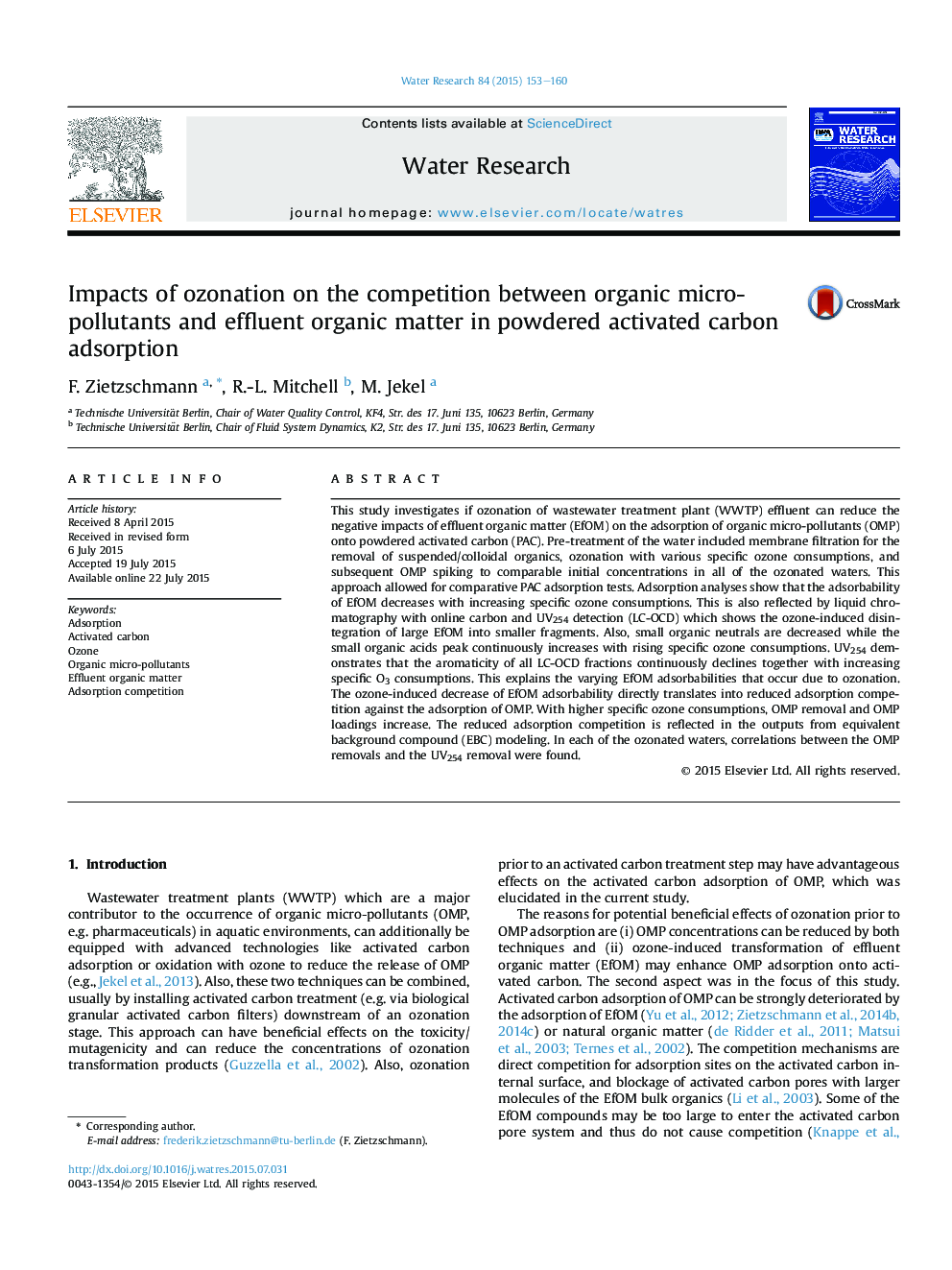| کد مقاله | کد نشریه | سال انتشار | مقاله انگلیسی | نسخه تمام متن |
|---|---|---|---|---|
| 4481083 | 1623084 | 2015 | 8 صفحه PDF | دانلود رایگان |
• Systematic investigation of ozone-induced changes in EfOM adsorbability onto PAC.
• Ozone reduces EfOM aromaticity, size, hydrophobicity, and adsorbability.
• Ozone reduces EfOM competition against adsorption of organic micro-pollutants (OMP).
• Different correlations of OMP and UV254 removal in differently ozonated waters.
• Equivalent background compound (EBC) model reflects variable adsorption competition.
This study investigates if ozonation of wastewater treatment plant (WWTP) effluent can reduce the negative impacts of effluent organic matter (EfOM) on the adsorption of organic micro-pollutants (OMP) onto powdered activated carbon (PAC). Pre-treatment of the water included membrane filtration for the removal of suspended/colloidal organics, ozonation with various specific ozone consumptions, and subsequent OMP spiking to comparable initial concentrations in all of the ozonated waters. This approach allowed for comparative PAC adsorption tests. Adsorption analyses show that the adsorbability of EfOM decreases with increasing specific ozone consumptions. This is also reflected by liquid chromatography with online carbon and UV254 detection (LC-OCD) which shows the ozone-induced disintegration of large EfOM into smaller fragments. Also, small organic neutrals are decreased while the small organic acids peak continuously increases with rising specific ozone consumptions. UV254 demonstrates that the aromaticity of all LC-OCD fractions continuously declines together with increasing specific O3 consumptions. This explains the varying EfOM adsorbabilities that occur due to ozonation. The ozone-induced decrease of EfOM adsorbability directly translates into reduced adsorption competition against the adsorption of OMP. With higher specific ozone consumptions, OMP removal and OMP loadings increase. The reduced adsorption competition is reflected in the outputs from equivalent background compound (EBC) modeling. In each of the ozonated waters, correlations between the OMP removals and the UV254 removal were found.
Figure optionsDownload high-quality image (215 K)Download as PowerPoint slide
Journal: Water Research - Volume 84, 1 November 2015, Pages 153–160
